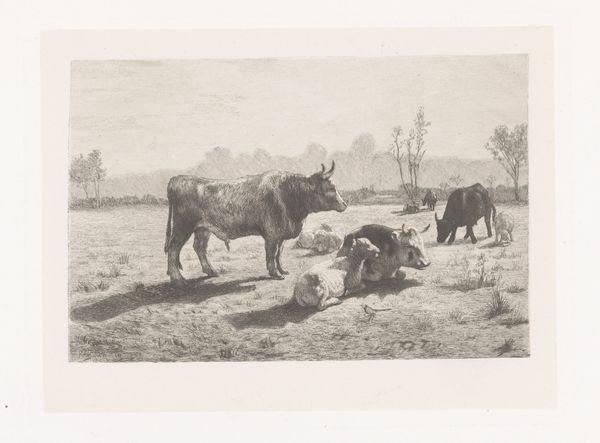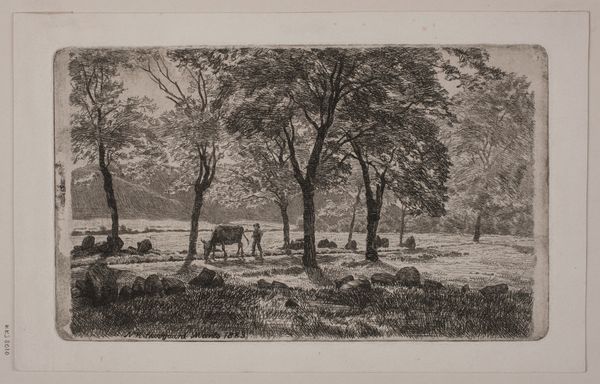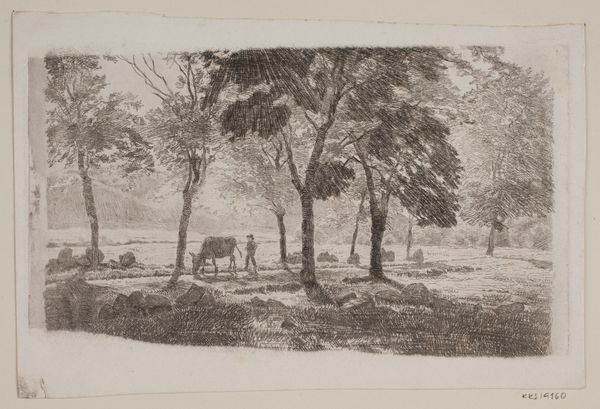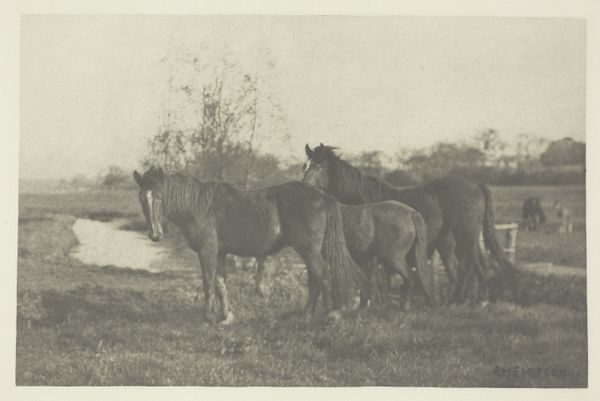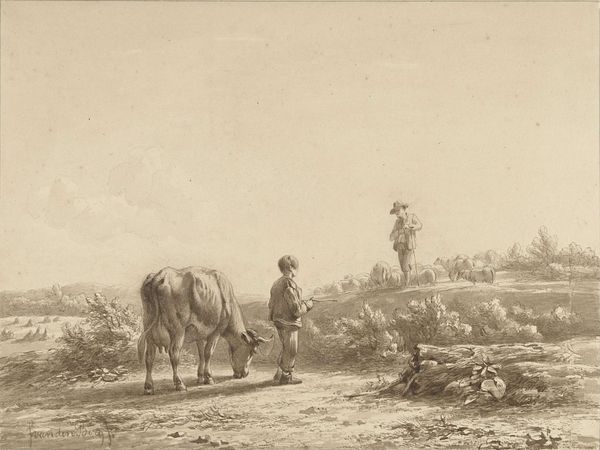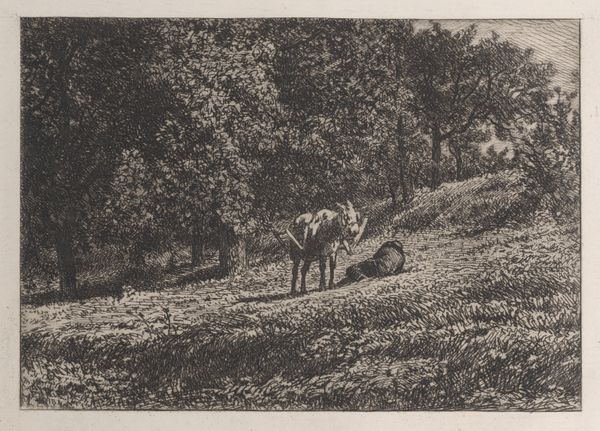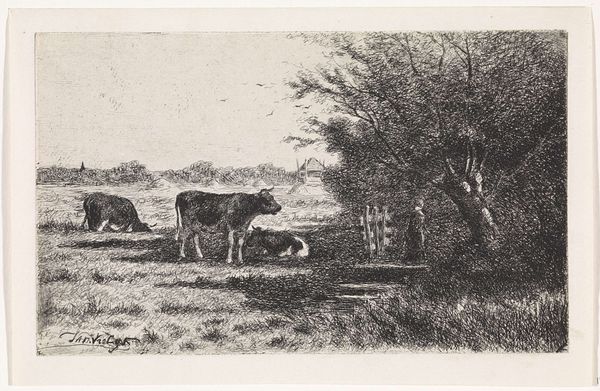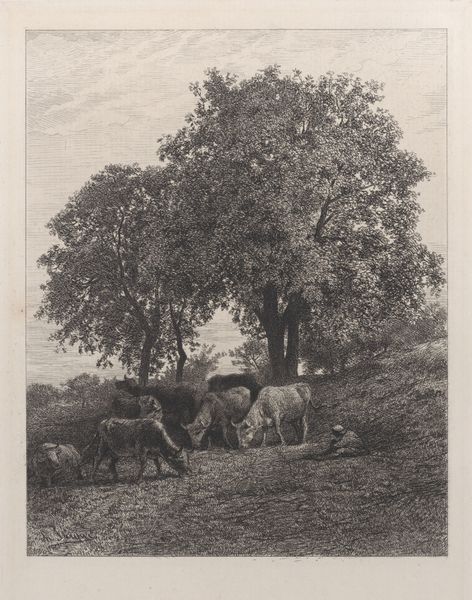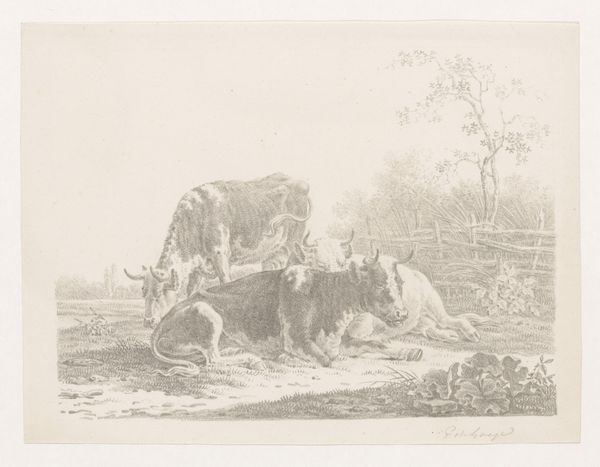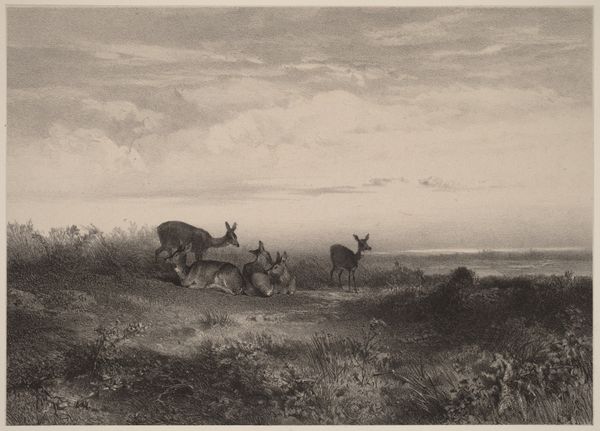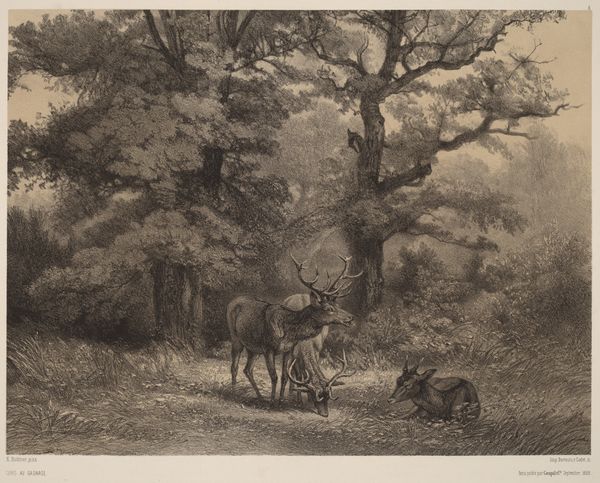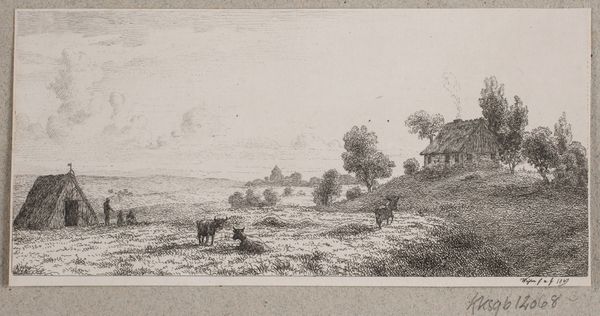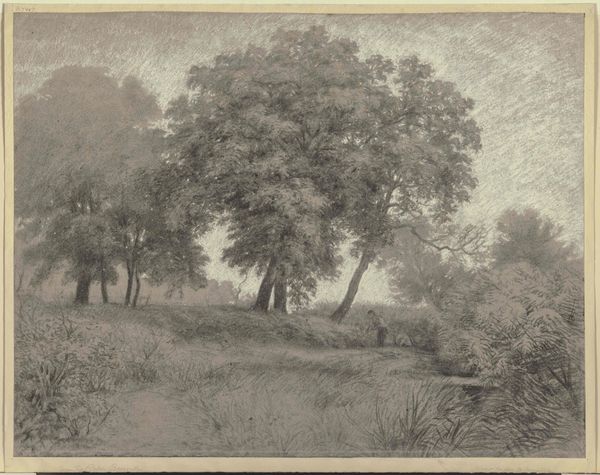
Dimensions: sheet (trimmed to image): 15 × 30.8 cm (5 7/8 × 12 1/8 in.)
Copyright: National Gallery of Art: CC0 1.0
Curator: What a quietly evocative image this gelatin silver print is! This is "Along the Seine," captured in 1894 by Alfred Stieglitz. Editor: Immediately, I see the tonality creates a subdued, almost dreamy effect. The composition—three goats set against the atmospheric depth of field—invites the eye to wander, seeking a focal point. It's balanced and still, almost staged, but still vibrant. Curator: The goats immediately bring a pastoral symbolism, connecting us to archetypal images of rustic life, fertility, and perhaps even sacrifice. Are we witnessing a power dynamic here? Two are in conflict, but the third one rests, leaning by a tree. Stieglitz often used his photography to depict deeper narratives. Editor: Narratives, maybe, but consider how the light seems diffused. It flattens the space, collapsing foreground and background into a tapestry of tonal relations. It seems Stieglitz uses these three goats to emphasize shapes. Their positioning also allows for the picture to breathe with subtle asymmetry; the one in the front offers the others a sense of rhythm. Curator: Right, but let’s think about context here too! Stieglitz sought to legitimize photography as a fine art. So are these goats symbols of nature, symbols of artifice, or are they even acting as symbols to demonstrate a rejection of the strict realism so present in photography at this time? It’s more likely these represent a deliberate, artistic vision. Editor: Agreed. Stieglitz masterfully harnesses the gelatin silver process, achieving such nuanced gradients from shadow to light, offering more than just subject matter. His skillful manipulation transformed mere scenery into an exquisite essay on light and form. It even borders on pointillism by virtue of form dissolution through the light in the background! Curator: Looking at it again now, it truly speaks to the dialogue between tradition and modernity—that's something that certainly makes Stieglitz’s work relevant to modern discussions in visual language. Editor: Yes. It’s clear, even to a modern eye, this artwork demonstrates the fundamental allure of seeing familiar elements arranged through the refined lens of artistic mastery.
Comments
No comments
Be the first to comment and join the conversation on the ultimate creative platform.
